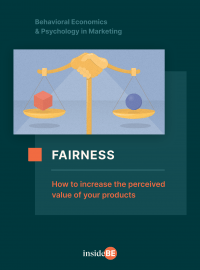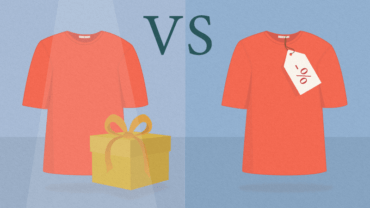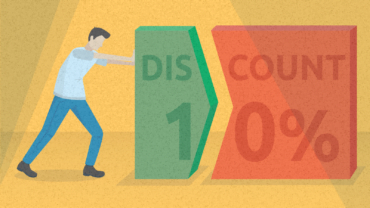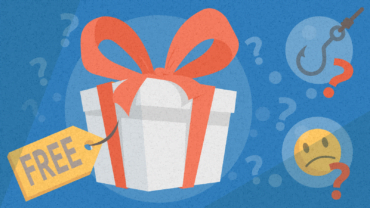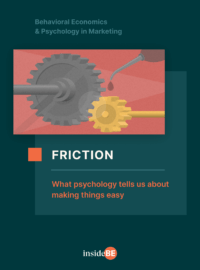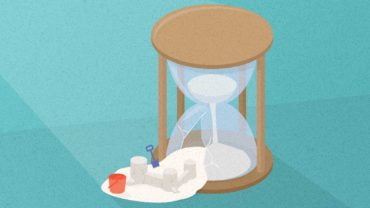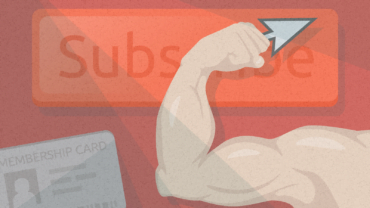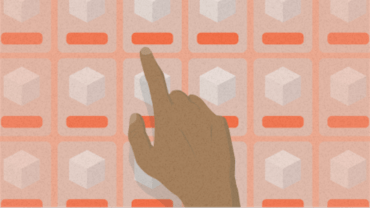Hedonic Adaptation – Everything You Need to Know

Article content:
Definition of hedonic adaptation
Hedonic adaptation is a theory that states that any major events (good or bad) don’t have a lasting effect (positive or negative) on our overall happiness.
That is why our happiness levels are relatively stable and don’t fluctuate over the long term, because even though we experience a temporary dip or rise as a result of events, we eventually return back to a baseline.

Discover ground-breaking ideas and fascinating solutions.
How does hedonic adaptation work?
The gist of the theory is that we get used to stuff – good or bad – or as Aldous Huxley more eloquently put it: “Habit converts luxurious enjoyments into dull and daily necessities.”
Thanks to this adaptation, we can bounce back fairly quickly after something bad happens, which is quite handy in overcoming major bumps on the road. On the flip side, it creates a problem if things are going our way.
This innate tendency to adapt is also known as the “hedonic treadmill”. The metaphor of a treadmill points out an inconvenient truth – no matter how hard we try to gain an increase in happiness, we tend to remain in the same place (or quickly return to it).
No matter what we desire, when we finally achieve it, our mind moves the goalposts again and again, in endless pursuit of the next big thing. This means we are never completely satisfied with what we currently have.
Though some evidence suggests the adaptation process may be more nuanced (challenging the assumption that the adaptation is inevitable and even recognizing the role interpersonal differences may play) there is evidence that fleeting moments of happiness or sadness can actually shift the baseline level of happiness up or down, therefore changing our ‘neutral’ level.
What impact does hedonic adaptation have?
The shift in baseline means that things which used to be “wow” are now taken for granted. For example, after you’ve just bought a new Tesla you may toy around excitedly with that insane acceleration power, much to the dismay of your partner and the health of their cervical spine, but a few months in it starts to feel a bit “meh”. Perhaps switching to a newer, bigger model might do the trick? Well, hold your horses before hunting for more horsepower. The whole process will just repeat itself!
The shift in baseline means that things which used to be “wow” are now taken for granted.
That is why buying a new car, getting a promotion at work, moving into a nicer house, or finding a partner to share your life with quickly becomes “normal” and you can no longer derive a persistent bump in joy from it. However, when looking back, there was a time where you thought that once you got those things, you’d be happier. And you were, briefly. But eventually your level of happiness returned to normal and you began to desire new things.
What makes it tricky?
The double whammy of the hedonic treadmill is that new events you seek to experience will be compared not only to your own past experience, but also to the experiences of people around you.
It means the higher your individual baseline level (and those who you compare yourself to), the harder it will be for you to experience happiness because the new stimuli you will seek out to feel better would have to surpass your newly bumped up baseline.
For instance, if you suddenly inherit a hefty sum from a long-lost uncle, you may feel richer than your neighbors, and imagine that moving to a mansion in a new neighborhood will make you happy. But when you do, you look out of the window only to realize that all your new friends live in more impressive mansions.
It means the higher your individual baseline level (and those who you compare yourself to), the harder it will be for you to experience happiness because the new stimuli you will seek out to feel better would have to surpass your newly bumped up baseline.
Interestingly, the hedonic treadmill may not apply to all kinds of pleasures. One that seems to be particularly resistant is the pleasure we get from undergoing plastic surgery, where people report steady levels of happiness long after the fact.
Hedonic adaptation experiments
These are some of the fundamental academic experiments that have observed the human tendency to quickly return to a stable level of happiness despite major life changes.
Lottery winners and accident victims
In an interview-based study, Brickman, Coates and Janoff-Bulman found evidence of this adaptation for both positive and negative situations. They compared a sample of 22 major lottery winners with 22 controls and with a group of 29 paralyzed accident victims. They found lottery winners were not happier than non-winners, demonstrating that the happiness boost that money provides is fleeting.
They found lottery winners were not happier than non-winners, demonstrating that the happiness boost that money provides is fleeting.
Interestingly, the winners also took significantly less pleasure from a series of mundane events (presumably due to the shift in their baseline level of happiness). The researchers also concluded that people with paraplegia were not substantially less happy than those who can walk.
An active role in recovery
Though some hedonic adaptation research paints a bleak picture by showing how difficult it is to ever be happy, the following study conducted by behavioral economist Jayson S. Jia and colleagues shows the remarkable adaptability we have to bounce back after experiencing a negative event. It also shows that we play an active role in our recovery.
We are so good at returning to our baseline level of happiness because we counterbalance negative events with pleasurable activities, instead of getting stuck at a lower neutral level of happiness.
In the aftermath of an earthquake, Jia found people in the area increased their engagement with communication apps, functional apps (information tools) and hedonic apps (Candy Crush and the like). Curiously, using the hedonic apps helped decrease people’s perceived risk of another earthquake.
This supports the hypothesis that we are so good at returning to our baseline level of happiness because we counterbalance negative events with pleasurable activities, instead of getting stuck at a lower neutral level of happiness.
History
A pair of northern American psychologists, Brickman and Campbell, first wrote about the concept of hedonic adaptation back in 1971 in the essay, “Hedonic Relativism and Planning the Good Society”. It was based on Helson’s earlier adaptation level theory, which implied that perception of any newly emerged stimulation is not judged on its own, but is compared to previously experienced stimulations.
Perception of any newly emerged stimulation is not judged on its own, but is compared to previously experienced stimulations.
Brickman and Campbell used this finding and introduced an element of social comparison; they found that new events were compared not only to one’s own past experiences, but also compared to the experiences of people around us.
Two decades later, British psychologist Michael Eysenck coined the term ‘treadmill’ to refer to “hedonic adaptation” and this has stuck in public discourse as it is a fair depiction of striving to move ahead and yet returning inevitably to the same spot.
Examples of hedonic adaptation
Have you noticed how your quarterly/Christmas bonus no longer feels like a bonus but feels like a given? Because you’re used to receiving it each year (or several times a year), over time it has become less of a reward and more an expectation and requirement.
It’s really no wonder. We get used to stuff and your customers do too. An interesting shift happens: customers no longer feel better off if they get the extra pleasantries you bestow on them; they start to take them for granted and even feel entitled to them. Thus, they feel worse off if they don’t get them.
Customers no longer feel better off if they get the extra pleasantries you bestow on them; they start to take them for granted and even feel entitled to them. Thus, they feel worse off if they don’t get them.
Your business then falls into a vicious self-reinforcing circle where handing out stuff doesn’t feed into customer loyalty anymore; it merely prevents a major upset.
The danger of a random discount
A colleague of ours recently experienced a brief moment of severe discontent at her dentist appointment. It wasn’t about the procedure itself. It had to do with a sense of fairness.
During each of her annual visits over the previous three years, she had got used to having a discount presented with no elaborate explanation, simply that: “Dr. Schill has decided to give you a 10% discount”. It didn’t matter that it was somewhat random and its presentation left a lot to be desired; she was excited as it made the hefty sum a bit easier to swallow.
Until, that is, the last appointment where she didn’t get it. It felt as if she had somehow been cheated! Something that felt like a treat the first time had slowly grown into an expectation and almost a right.
This is a natural consequence – when you discount too much or too often, the new price may become expected and drive previously happy customers away.
Another reason why discounts are tricky is that consumers are also more likely to believe that a brand that promotes more often than others in its industry is of poorer quality than others in that industry, while a brand that promotes less often is perceived to be of better quality.
The case of the German hardware chain store Praktiker offers a cautionary tale. They ran a campaign offering a whopping 20% discount on everything except pet food. They were then so pleased with the initial results that they soon started running the campaign every other month, rather than as a one-off or occasional offer.
The consequences? Customers only started coming in during the months that the promotion was running; they were unwilling to pay the higher “regular” price, which now felt like a rip-off. Their new reference prices for items at Praktiker were 20% lower. Praktiker, a €3bn company with 20,000 employees, went out of business in 2013.
The danger of a free gift
The same habituation that is true for discounts also goes for free gifts. The problem is, once you offer something for free, it serves as an anchor to the customer. Not only does it become difficult to ever charge for it again as people have been attracted to the ‘free’ service and product, they also become spoiled by it. Think about it from a consumer perspective – if you have always been given something for free, it creates tension and resentment when someone starts asking for payment.
But don’t think you’re out of the woods, even if you give customers something small on the side each time they shop. They get used to it and begin to expect it. It quickly becomes something they are entitled to, which doesn’t create more loyalty or happiness, because it can severely backfire when, for whatever reason, you stop.
How to treat it in business?
Have you noticed how even the most intriguing TikTok video becomes rather dull after you’ve watched countless reels of it? Habituation is a thief. It diminishes the pleasure you get from the very same thing.
On a societal level, it means that any interventions aimed at improving citizens’ happiness would ultimately fail, because people would just incorporate the new improved experiences into their baselines.
On a business level it means you need to shake things up for customers to create a sense of novelty and excitement, and also work on ways to build a value-added promotion without relying heavily on discounts. Here are several business inspirations.
Offer bonus features instead of discounts
One way to do that is to add bonus features to your product or service. Things like free shipping, access to special privileges others do not have, and physical add-ons to a product. Research shows that customers value bonuses more than discounts.
Amazon kills two birds with one stone. Instead of giving privileges to all its customers, it has created a loyalty program that removes friction in the purchase process and gives Prime customers access to benefits including deals, discounts, and first-purchase offers, as well as access to their video streaming service, which regular Amazon customers do not get.
Not only does this provide added value, but it also plays into exclusivity, which we know pleases customers. But here’s the real kicker – these bonus features are not free! Amazon has cleverly reaped the best of both worlds, adding value to their customer’s journey, whilst collecting money for access to the bonuses.
Amazon has cleverly reaped the best of both worlds, adding value to their customer’s journey, whilst collecting money for access to the bonuses.
Click here to read more about why offering multiple separate bonuses is better than one of the same value.
Give customers an opportunity to earn rewards
As the name suggests, an earned discount/reward is when the customer is required to put in some effort to be entitled to that discount/gift.
And what makes this a good strategy? Evidence suggests that when a customer is involved in the process of acquiring a discount, they generate positive emotions and have stronger motivation to complete the task.
When a customer is involved in the process of acquiring a discount, they generate positive emotions and have stronger motivation to complete the task.
The main reason for this is the IKEA effect, which means that when we put effort into something, it becomes more valuable to us. The same goes for earning rewards, as these rewards become more valuable to customers since they’ve had to put the effort in to gain them.
You can use two types of earned awards:
- After customers complete an activity
The classic Renault Delphine campaign presented the challenge of finding a nick in a car’s paintwork. If customers found it, they got $500 off. The dialogue changed from, “The company is offering $500 off to everyone to sell their old models,” to “I exclusively got $500 off because I was clever enough to spot the nick.”
What’s clever about this is that it prevented customers from assigning lower worth to the car and ensured its perceived value and originality. It’s simply because customers did not view this car as a leftover, but as a brand-new car that was available at a discounted price for them.
- After customers meet a goal
Research shows that customers take pride in being termed as ‘Smart Shoppers.’ In cases where brands use loyalty points, customers believe that they have come out on top against the brand by extracting lots of discounts. But in reality, to meet the goal, they have made impulse purchases and helped the companies increase their profits.
For example, Kiehl’s earned reward system gives customers an opportunity to choose what to turn their points into based on whether they want to spend their points sooner rather than later. They can choose to convert them once they hit 150 euro spent (150 points) or they can wait until they hit a whopping 900 euro to choose a very premium product worth around 70 euro, which is less than 10% OFF on their overall purchase, but feels much more valuable.
Summary
What is hedonic adaptation?
Hedonic adaptation is a theory that states that we have a relatively stable level of happiness which doesn’t fluctuate. That means any major events (good or bad) don’t have a lasting effect (positive or negative) on our overall happiness.
Even though we experience temporary dips or rises as a result of these events, we quickly return to our baseline.
What impact does it have?
It means we get used to good stuff. The problem is that when we finally achieve what we were aiming for, our mind moves the goalposts again and again, in an endless pursuit of the next big thing, meaning we are never completely satisfied with what we currently have.
In business, it means that when you discount too much or too often, the new price may become expected, and drive previously happy customers away. The same habituation also goes for free gifts.
Once you offer something for free, it serves as an anchor to the customer. It quickly becomes something customers feel entitled to, which doesn’t create more loyalty or happiness because it can severely backfire once you no longer give out the gift.
How can we treat hedonic adaptation in business?
Work on ways to build a value-added promotion without relying heavily on discounts which everyone is eligible for. Instead:
- Offer bonus features in lieu of discounts. You are adding value, but also playing into exclusivity, which pleases customers. Since these bonus features are not free, you are also collecting money on the side.
- Give customers an opportunity to earn rewards either after they have completed an activity or when they have met a goal.

